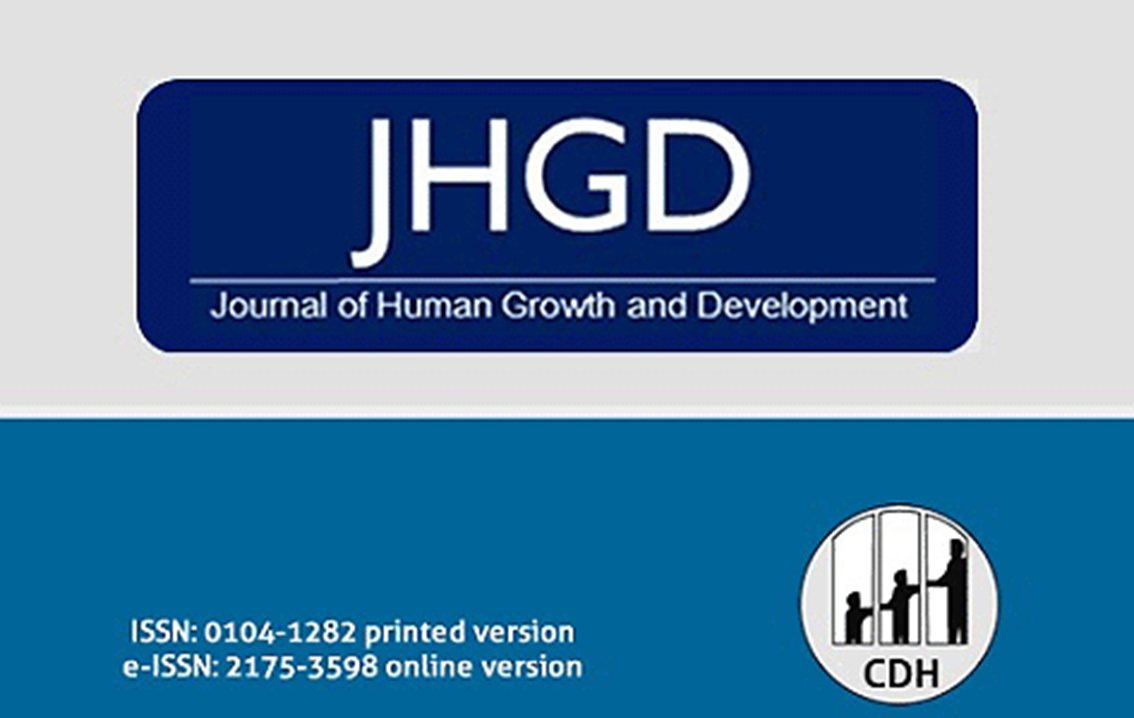Physical punishment at home and grade retention related to bullying
DOI:
https://doi.org/10.7322/jhgd.v30.11111Keywords:
social vulnerability, Gender-based violence., bullyingAbstract
Backgroung: Several situations can affect the development and health of school children and adolescents. Bullying, characterized by a set of aggressive, intentional and repetitive behaviors, marked by the imbalance of power between victims and bullies, is one of the most serious problems in this sense, as it occurs in a context in which security and sociability are assumed. Therefore, this study was developed to expand the understanding about this phenomenon,
contemplating variables ignored in many studies (family interactions, modes of discipline and school failure).
Objective: To analyze the participation of students in bullying situations and their experiences of vulnerability “to be beaten at home” and “grade retention”.
Methods: the study consisted of 409 students from the 3rd to the 7th grades of Brazilian Elementary Education of two public schools. The data were collected through a questionnaire instrument with structured questions with the purpose of describing the possible roles of participation in bullying and characterizing the students regarding
the context of social vulnerability in which they were. Vulnerability indicators were considered: per capita income, schooling of the adult population, housing conditions and crime / violence indices. Two schools were the research scenario. Data were analyzed using inferential statistics using the Chi-square test to verify the association
between the variables, Mann-Whitney U and Kruskal Wallis for comparison between groups.
Results: to be beaten at home was associated with the students’ involvement in bullying situations as victims, bullies and bully-victims. These students also differed in relation to years of grade retention and frequency of physical punishment when compared to students not involved in bullying situations. Students classified as bullyvictims
demonstrated greater vulnerability in relation to the variables investigated. There were no significant differences in the comparison between participants’ sex and involvement in bullying situations.
Conclusion: It was observed that physical punishment used as a home discipline strategy and school failure are factors that increase students’ vulnerability to bullying or victimization. The data indicate that it is necessary to include families in anti-bullying intervention actions. At the same time, it must be considered that this inclusion should not be restricted to the field of education or school. It is necessary to think in an intersectoral way, especially including the
family health teams that have moments with the families and that can be used to think about discipline techniques and how children, children and adolescents are disciplined at home.
Downloads
References
Zequinão M, Oliveira W, Medeiros P, Oliveira B, Cardoso F. Vulnerabilidade e bullying escolar: interfaces teóricas possíveis. Pensar a Prática, 2017; 20: 3. DOI: https://doi.org/10.5216/rpp.v20i3.41987
Silva JL, Oliveira WA, Sampaio JMC, Farias MS, Alencastro LCS, Silva MAI. How do you feel? Students’ emotions after practicing bullying. Rev Eletr Enferm, 2016; 17(4): 1-8
Puhl RM, King KM. Weight discrimination and bullying. Best Pract Res Clin Endocrinol Metab. 2013; 27(2): 117-27.
Jansen DE, Veenstra R, Ormel J, Verhulst FC, Reijneveld SA. Early risk factors for being a bully, victim, or bully/victim in late elementary and early secondary education. The longitudinal TRAILS study. BMC Public Health. 2011; 11: 440. DOI: https://doi.org/10.1186/1471-2458-11-440
Downloads
Published
Issue
Section
License
Copyright (c) 2020 Marcela Almeida Zequinão

This work is licensed under a Creative Commons Attribution 4.0 International License.







